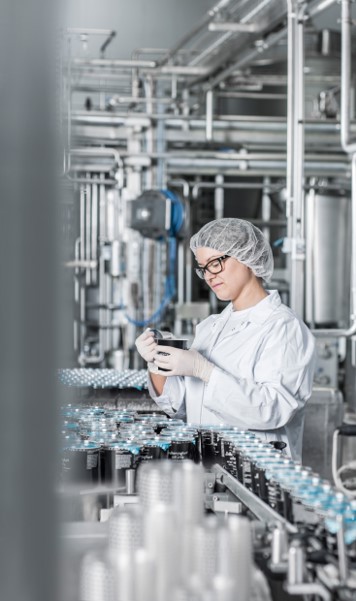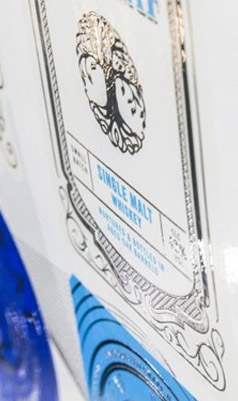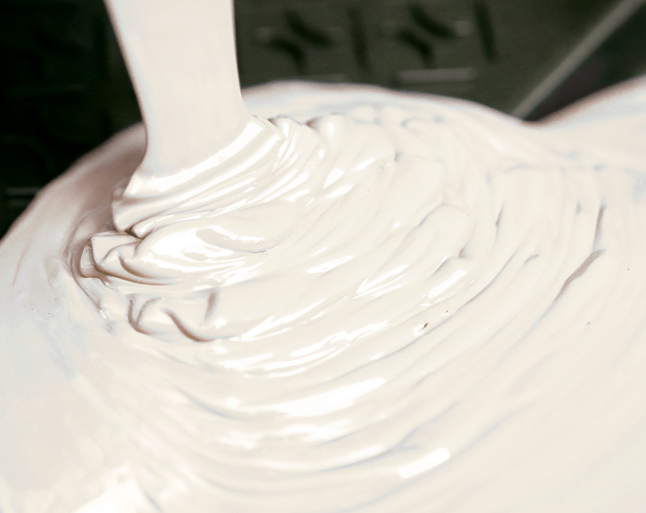

Flexible Packaging
ACTEGA is an international leader in flexible packaging by offering tailored inks, coatings and adhesives.
LEARN MORE

ACTEGA is an international leader in flexible packaging by offering tailored inks, coatings and adhesives.
LEARN MORE

Our focus on innovation is at the heart of our DNA, so we invest heavily in the development of new technologies.
DISCOVER MORE

Our goal is becoming climate-neutral by 2025. Discover more about our commitment to environmental protection.
DISCOVER MORE

Discover our calendar with great images and powerful finishing effects.
MoreYou have already subscribed to our newsletter.
You successfully unsubscribed from our newsletter
Continue ShoppingViscosity describes the condition of a liquid. Thus, the viscosity shows the capability of a liquid to flow. This means: The higher the viscosity, the thicker (less flowable) the coating; the lower the viscosity, the thinner (more flowable) the coating.
For the processing of a coating, viscosity plays an important role. Only if the coating has been properly adjusted, a problem-free application out of the coating unit can be provided. If viscosity is too high or too low, running disturbances on the substrate or blocking of the sheets in the pile can be the result.

In general: Viscosity should not exceed 100 seconds. In practice, the following values have been established for the application in sheet-fed offset:
Measurement: It is carried out according to DIN 53211 in a 4 mm flow cup. A coating, temperated at 20° Celsius, is filled into a correspondingly temperated cup. Now, the coating starts to run into a (coating) container positioned under the flow cup. With a stop watch, the flow time is measured in seconds. Measurement begins with the running of the coating and stops with the break of the coating stream.
1. High temperatures or frost
High temperatures (> 35°C) have influence on the coating viscosity. This means: The higher the temperature, the more flowable the coating. Already a temperature difference of 1°C can result in a viscosity difference of several seconds. An example: A coating has been adjusted to 40 seconds at 20°C. If the temperature goes up to 30°C, the viscosity may fall down to 32 seconds. A temperature of 15°C may cause a viscosity increase up to 47 seconds. If the coating is too thin due to heat, temperature should be brought down. We recommend 20°C as a processing temperature for waterbased coatings. If possible, keep the temperature stable during the processing of the coating. For winter time: Depending on the coating type, waterbased coatings can freeze at temperatures below minus 5°C. If this happens, the frozen coating should be slowly defrosted at room temperature. A processing is not possible if the coating has not reached room temperature after stirring. In some cases it may come to a viscosity increase. This must be controlled and, if necessary, adjusted by means of the addition of water (maximum 3%).
2. Long or wrong storage
Long storage periods may result in a viscosity increase for waterbased coatings. By means of a good stirring it is mostly possible to reach the original viscosity again. Otherwise, it should be regulated by the addition of water (maximum 3%). Moreover,
keep coating containers properly closed. Like this, evaporation and thus, a viscosity increase can be avoided.
3. More recommendations
Check the viscosity of your coating regularly, also before and during the coating process. In advance of each viscosity check, the coating must be stirred well.
Still have open questions? Contact us and we will support you with the application.
CONTACT USThe Troubleshooting Series is your source of content with smart tips that helps you to make the most of all ACTEGA products in your processes. In addition to state-of-the-art chemical specialties for the packaging industries, we are your knowledge partner by offering you our technical expertise and useful information.
Discover all of our content